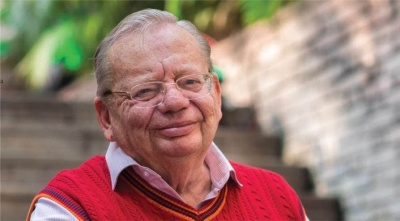
Ruskin Bond is an Indian author of British descent. His first novel, The Room on the Roof, received the John Llewellyn Rhys Prize in 1957. He was awarded the Sahitya Akademi Award in 1992 for Our Trees Still Grow in Dehra, his novel in English. Bond has written hundreds of short stories, essays, novellas and books for children. He lives with his adopted family in Landour, Mussoorie.
In 1963, he went to live in Mussoorie because besides liking the place, it was close to the editors and publishers in Delhi. He edited a magazine for four years. In the 1980s, Penguin set up in India and approached him to write some books. He had written Vagrants in the Valley in 1956, as a sequel to The Room on the Roof. These two novels were published in one volume by Penguin India in 1993. The following year a collection of his non-fiction writings, The Best of Ruskin Bond was published by Penguin India. His interest in supernatural fiction led him to write popular titles such as Ghost Stories from the Raj, A Season of Ghosts, and A Face in the Dark and other Hauntings. Since then he has written over five hundred short stories, essays and novels, including The Blue Umbrella, Funny Side Up, A Flight of Pigeons and more than 50 books for children. He has also published his autobiography: Scenes from a Writer’s Life describes his formative years growing up in Anglo-India and a further autobiography, Lone Fox Dancing, was published in 2017. The Lamp is Lit is a collection of essays and episodes from his journal.
Since 1963 he has lived as a freelance writer in Mussoorie, a town in the Himalayan foothills in Uttarakhand where he lives with his adoptive family in Landour, Mussoorie’s Ivy Cottage, which has been his home since 1980. Asked what he likes the most about his life, he said, “That I have been able to write for so long. I started at the age of 17 or 18 and I am still writing. If I were not a professional writer who was getting published I would still write.” In his essay, “On being an Indian”, he explains his Indian identity, “Race did not make me one. Religion did not make me one. But history did. And in the long run, it’s history that counts.”
Picture Credit : Google




